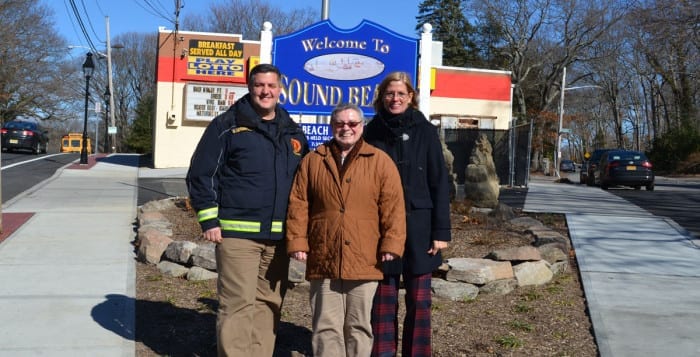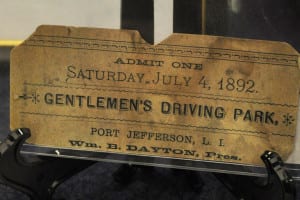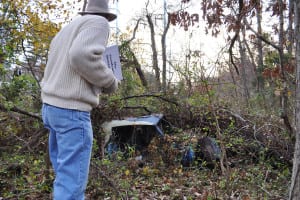Brookhaven Town Highway Superintendent Daniel P. Losquadro (R) and Councilwoman Jane Bonner (C-Rocky Point) announced the completion of a revitalization project designed to enhance pedestrian safety and beautify a busy stretch of Echo Avenue between North Country Road and New York Avenue in Sound Beach.
The downtown project, which included the addition of handicap-accessible sidewalks, new curbs and guiderails, crosswalks, decorative lighting and ornamental trees, was made possible, in part, from a Community Development Block Grant.
With CDBG funding covering a portion of the project, the Brookhaven Highway Department went out to bid for the project. The total cost was approximately $500,000, including the CDBG grant in the amount of approximately $110,000.
“The completion of this project is another example of the Highway Department’s continuing efforts to bring a downtown feel to one of our Brookhaven communities, similar to what we had done in Rocky Point in 2014,” Losquadro said. “In addition to beautifying the area, this project provided long-term solutions to many of the safety concerns voiced by local residents and business owners.”
As part of this three-month revitalization project, a four-foot wide sidewalk was constructed on the north side of Echo Avenue, beginning at North Country Road. A crosswalk was installed at the corner of Devon Road, near CaraMia Pizzeria, across Echo Avenue to connect the sidewalks that continue to New York Avenue. In addition, the triangle at the Shinnecock Drive and Echo Avenue intersection — the site of the Sound Beach Civic Organization’s “Welcome to Sound Beach” sign — was expanded to provide an entryway to the community.
“Walkable communities can only happen if pedestrians feel safe and the streetscapes that they travel are pleasant and inviting,” Bonner said.
Bea Ruberto, president of the Sound Beach Civic Association, said the improvements to the roadway have not only made it better for residents to walk and drive, but have also made it more welcoming to those entering the hamlet.
“We’re so grateful to Jane, Dan and the Town for realizing that smaller towns like Sound Beach add to what makes Brookhaven such a great place to live, work, and play,” she said. “And, of course, we look forward to further improvements in our little hamlet.”


















